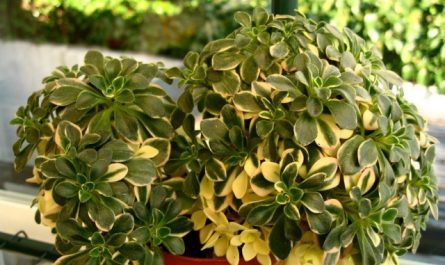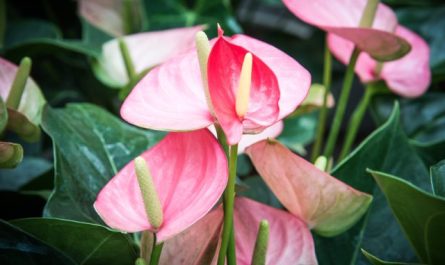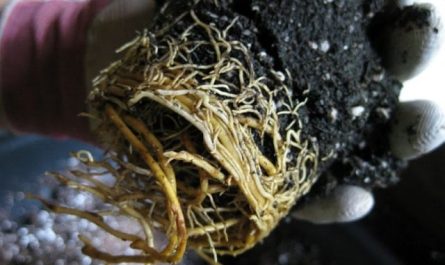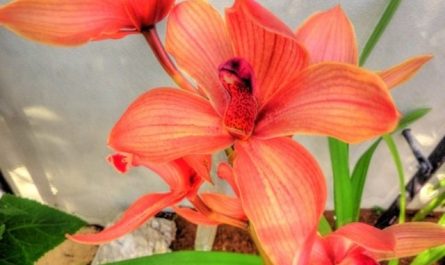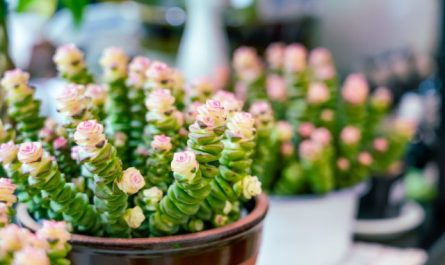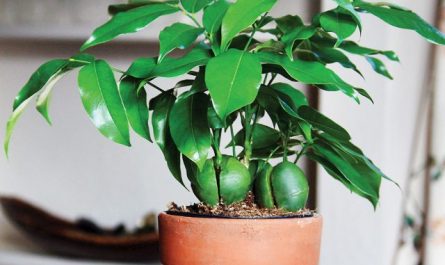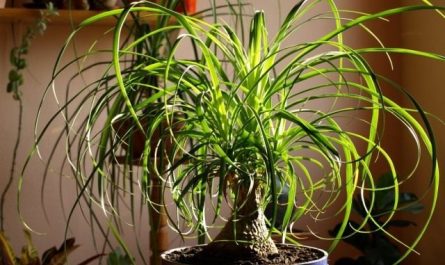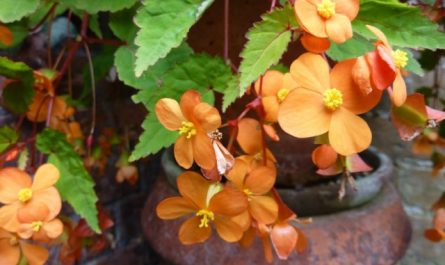Nitroammophoska is one of the most well-known fertilizers, produced in the form of granules of a pink-milky color. By using nitroammophoska, you can get a full harvest and achieve good plant development. In addition, nitroammophoska promotes rapid adaptation of newly planted plants in a new place, can extend the flowering period of ornamental plants and even increase the winter hardiness of a variety of crops. Nitroammophoska is perfectly soluble, which is why it is often used for foliar feeding.

Contents:
Composition and various combinations of nitroammophoska
Nitroammophoska contains 3 main elements necessary for plants – nitrogen, phosphorus and potassium. All of these elements are present in nitroammophoska in forms that are easily accessible to plants.
The most well-known nitroammophoska contains three main substances in a ratio of 16:16:16. Such nitroammophoska contains approximately 16% of each of the main elements, i.e. the total share of elements useful for plants is about 50%. This type of nitroammophoska can be used on all types of soil.
The next type of nitroammophoska has the composition: 8:24:24. This type of nitroammophoska is used on soils where there is a deficiency of phosphorus and potassium. The fertilizer is ideal for winter crops, root crops and potatoes, it is often used in regions with a moisture deficit in the soil.
The following types of nitroammophoska: 21:0,1:21 and 17:0,1:28 – are used on soils with a deficiency of nitrogen and potassium, but with a sufficient amount of phosphorus.
Pros and cons of nitroammophoska fertilizing
Advantages of using nitroammophoska
- The main advantage is a very high concentration of substances necessary to stimulate plant growth and increase their yield. Relative to the total mass of fertilizer, the share of substances necessary for plants is 30%.
- Nitroammophoska is extremely easy to dilute in water, which is its undoubted advantage.
- Each granule of nitroammophoska contains three essential substances – N, P and K.
- It is well preserved and, if stored properly, retains its flowability.
- Thanks to the use of nitroammophoska, yields sometimes increase by up to 70% (depending on the crop itself).
Disadvantages of using nitroammophoska
- Along with its undoubted advantages, nitroammophoska also has its disadvantages. For example, not everyone likes that it is a chemical preparation.
- If nitroammophoska is applied in excessive doses, nitrates are guaranteed to accumulate in the soil, they penetrate into vegetables, root crops, fruits and berries and negatively affect the human body.
- Nitroammophoska is a flammable and explosive substance, therefore, it is necessary to strictly monitor storage conditions and keep nitroammophoska away from fire.
Rules for using nitroammophoska
Considering the flammability and explosive properties, nitroammophoska can be stored at a temperature of no more than +30°C. For storage, you should choose premises built of brick or concrete.
To prevent granules from sticking together, humidity during storage should not exceed 50%.
When applying fertilizer, be sure to wear rubber gloves and a respirator.
Features of use on the home plot
Nitroammophoska is used both before sowing or planting, and on growing crops. The best results are achieved on gray and black soils, on sufficiently moist soil.
On heavy soils it is better to apply nitroammophoska in the fall, on sandy soils – in the spring.
Optimal dosages for different crops
In the autumn, about 42 g per square meter should be added when digging the soil. When cultivating virgin soil, 50 g per square meter should be added. For greenhouse soil, 30 g per square meter is required.
Under the tomato bushes
Effect on tomatoes – strengthening shoots, accelerating growth and ripening of tomatoes. Usually, nitroammophoska is applied to tomatoes four times. The first time is in the spring, a couple of weeks after you planted the seedlings in the ground. At this time, a tablespoon of fertilizer should be dissolved in a bucket of water and 0,5 liters should be used for each plant.
The second feeding is carried out a month after the first. At this time, nitroammophoska in the amount of a tablespoon should be dissolved in a bucket of water and 0,5 kg of mullein should be added to the solution. The application rate is 0,6 l per plant.
The third feeding should be done when the third tomato brush begins to bloom. At this time, you need to dissolve a tablespoon of nitroammophoska and a tablespoon of sodium humate in a bucket of water. The norm is 1 liter per plant.
The fourth feeding should be carried out two weeks after the third with the same composition as the third at a consumption rate of 1,5 liters per plant.

For potatoes
Together with planting tubers, it is necessary to put a teaspoon of fertilizer and mix it with the soil. The introduction of nitroammophoska in this way will stimulate the growth of the root system of potatoes, improve the growth of the vegetative mass of the plant. It is quite acceptable to water the planted plants with a solution of nitroammophoska. In this case, it is necessary to dissolve 30 g of fertilizer in a bucket of water – this is the norm per square meter of soil.
For cucumbers
They are fed a couple of times during the growing season. The first treatment is carried out before placing cucumber seedlings in the ground, using 30 g per 1 m2.
The second time cucumbers are fed before the beginning of the formation of ovaries. During this period, 40 g of fertilizer is dissolved in a bucket of water. 350 g of solution is used for each plant.
Under the bell pepper
This crop is fed with fertilizer 14 days after placing the plants on the ground. For feeding, dissolve a tablespoon of nitroammophoska in a bucket of water – this is the norm per square meter of soil.
For oats and other crops
Rye, oats, wheat, corn and sunflower like nitroammophoska at the beginning when sowing these crops, and then in the middle of the season.
The calculation is made per hectare, for some crops there is a specific norm, for example, for wheat you need 170 kg of fertilizer per hectare; for rye, barley and oats – 150 kilograms, for sunflower – 180 kg, for corn – 200 kg.
In the middle of the season, sweet corn and varietal sunflowers growing on the home plot are usually fed. The norm is two tablespoons of nitroammophoska per bucket of water per square meter of soil.
For garlic and other onions
Garlic can be fed both under the root and by foliar feeding. The initial feeding is carried out 30 days after the formation of sprouts. It is appropriate to fertilize winter garlic in April, spring garlic – in June. A tablespoon of nitroammophoska must be dissolved in a bucket of water, this is the norm per square meter of the area occupied by garlic.
If the garlic plants are severely lacking nitrogen, which can be guessed by looking closely at the feathers, which turn yellow due to a lack of nitrogen, it is necessary to feed them by foliar feeding. This fertilizer should be dissolved in water in the amount of one tablespoon, then the solution should be poured into a sprayer and the garlic feathers should be treated, wetting them as well as possible. Usually, after just a couple of days after such feeding, the effect is clearly noticeable.

For garden crops
This fertilizer is perfect for providing fruit trees of different ages and berry bushes with the most important elements.
The first application of this fertilizer should be done before planting tree and shrub seedlings. The amount of fertilizer usually depends on the age of the seedling and its size. For example, for one-year-olds, about 150 g of nitroammophoska should be added to the planting hole, mixing it well with the soil so that the roots of the seedling do not come into contact with the fertilizer. For two-year-old fruit crop seedlings, 200 g of fertilizer should be added, and for small shrub seedlings, 100 g of this fertilizer will be enough.
Plants respond well to the application of nitroammophoska after flowering. At this time, 50 g of nitroammophoska, previously diluted in a bucket of water, are applied under fruit trees. Under large trees older than seven years, this amount of fertilizer can be tripled.
After flowering, raspberries also need to be fed with nitroammophoska, adding about 40 g of it in the form of a solution (in a bucket of water per square meter of soil). For currants and gooseberries, 30 g of fertilizer, also dissolved in the same volume of water, will be enough.
If during the growing season there is a weakening of growth activity in plants, then it is permissible to carry out foliar feeding with nitroammophoska. It is advisable to carry it out no later than mid-summer, you need to dissolve 2-3 tablespoons of fertilizer in a bucket of water and in the evening thoroughly moisten the entire above-ground part of the plants with this solution.
Nitroammophoska helps grapes quite well. About two tablespoons of nitroammophoska, previously dissolved in 10 liters of water, are added under the bush in the spring, and after flowering, foliar feeding is carried out, dissolving a tablespoon in a bucket of water and spraying the plants with this composition, wetting the entire above-ground mass.
Under the flowers
All the most important elements contained in nitroammophoska are necessary for flower crops. Thanks to nitroammophoska, you can achieve lush and long-lasting flowering.
The very first feeding with this fertilizer can be done a couple of weeks after the emergence of shoots above the soil surface. Both annual flower crops and perennials need to be fed with nitroammophoska dissolved in 10 liters of water in the amount of 30 g per square meter occupied by flowers.
Flowers can be fed again during the period of bud formation by increasing the amount of nitroammophoska dissolved in a bucket of water to 40 g per square meter of soil occupied by flowers.
The third time, to extend the flowering period, flowers can be fed at the height of flowering by dissolving 50 g of nitroammophoska in a bucket of water and watering a square meter of soil occupied by flowers with this solution.
Nitroammophoska is also necessary for houseplants; here you can get by with just one foliar feeding in the spring, dissolving two tablespoons of nitroammophoska in a bucket of water and thoroughly wetting the above-ground mass.
Conclusion. As we can see, nitroammophoska is a wonderful universal fertilizer that is necessary for fruit, berry and flower crops. Of course, like any other fertilizer, nitroammophoska should be used at the optimal time and in the optimal amount – we have understood all this. If you do everything correctly, then it is impossible to harm either the plants or yourself.





